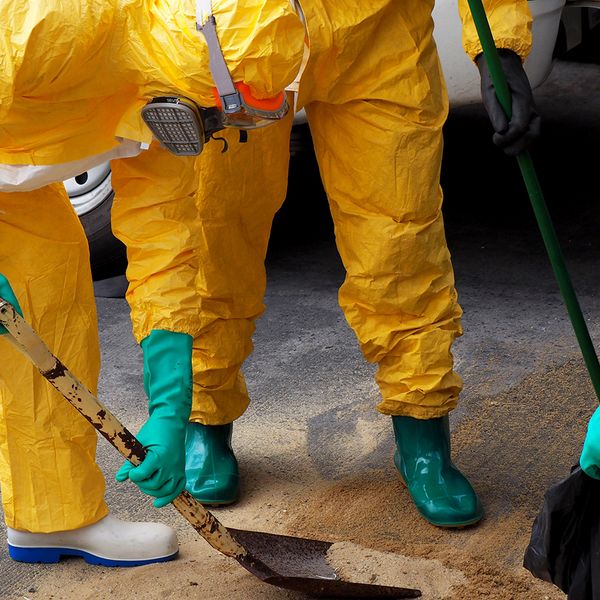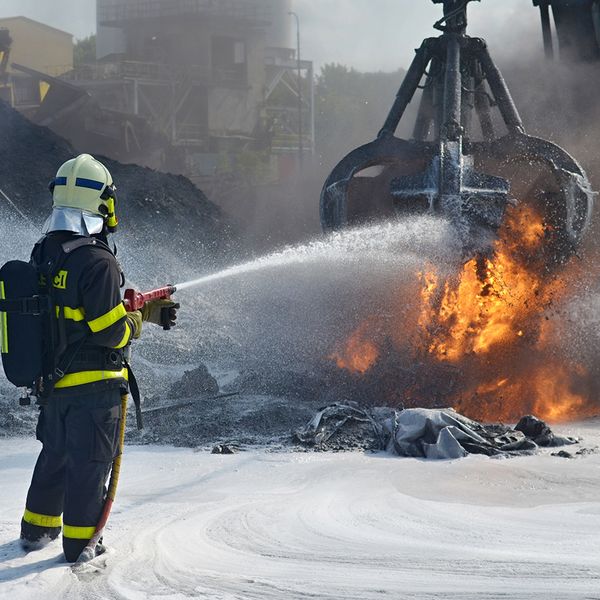Do you know when HAZWOPER training applies?
OSHA cited a Georgia chemical manufacturer for lack of training under the Hazardous Waste Operations and Emergency Response (HAZWOPER) Standard after inspectors found that workers had cleaned up approximately 6,000 gallons of caustic soda without receiving training on hazardous substance response.
The company also was cited for lack of training under the Hazard Communication (HazCom) Standard, as employees were exposed to hazardous chemicals while batching them without training on the hazards and how to protect themselves. It may be easier to understand when HazCom training requirements kick in, but how do you know when HAZWOPER applies?
When does HAZWOPER apply?
HAZWOPER applies to emergency response activities where there’s an uncontrolled release of a hazardous substance, or where an uncontrolled release is likely. This includes things like:
- Leaking of a hazardous substance from a storage tank or container,
- An overturned truck or railcar carrying hazardous materials,
- Chemical fires, and
- Site preparation uncovering buried hazardous waste.
Under HAZWOPER, “emergency response” refers to a response effort by designated personnel to an occurrence that results in, or is likely to result in, an uncontrolled release of a hazardous substance. This includes, but is not limited to, the following situations:
- The hazardous substance release requires evacuation of employees in the area.
- The response comes from outside the immediate release area.
- The release poses, or has the potential to pose, conditions that are immediately dangerous to life and health (IDLH).
- The release poses a serious threat of fire or explosion (exceeds or has the potential to exceed the lower explosive limit or lower flammable limits).
- The release requires immediate attention because of imminent danger.
- The release may cause high levels of exposure to toxic substances.
- There is uncertainty that the personnel in the work area can handle the severity of the hazard with the personal protective equipment (PPE) provided and could suffer exposure above the exposure limit.
- The situation is unclear, or data is lacking on important factors.
Responses to “incidental releases” of hazardous substances where the substance can be absorbed, neutralized, or otherwise controlled at the time of release by employees in the immediate release area, or by maintenance personnel, are not considered to be emergency responses within the scope of HAZWOPER. Responses to releases of hazardous substances where there’s no potential safety or health hazard (i.e., fire, explosion, or chemical exposure) are not considered to be emergency responses.
Who needs HAZWOPER training?
Employees who are designated to respond to emergency releases must be trained based on the duties and function to be performed. Roles and training requirements are outlined at 1910.120(q)(6) and include first responder awareness level, first responder operations level, hazardous materials technician, hazardous materials specialist, and on-scene incident commander. Training must be conducted annually.
What qualifications do HAZWOPER trainers need?
OSHA requires that trainers “be qualified to instruct employees about the subject matter that is being presented in training.” These qualifications may be shown by academic degrees, completed training courses, and/or work experience. The subjects that trainers should be able to convey to employees at hazardous waste operations who need training are summarized in paragraphs (e), (p), and (q) of the standard.
Key to remember: Employees who are designated to respond to emergency releases of hazardous substances are covered by HAZWOPER and must be trained based on the duties and function to be performed.



















































